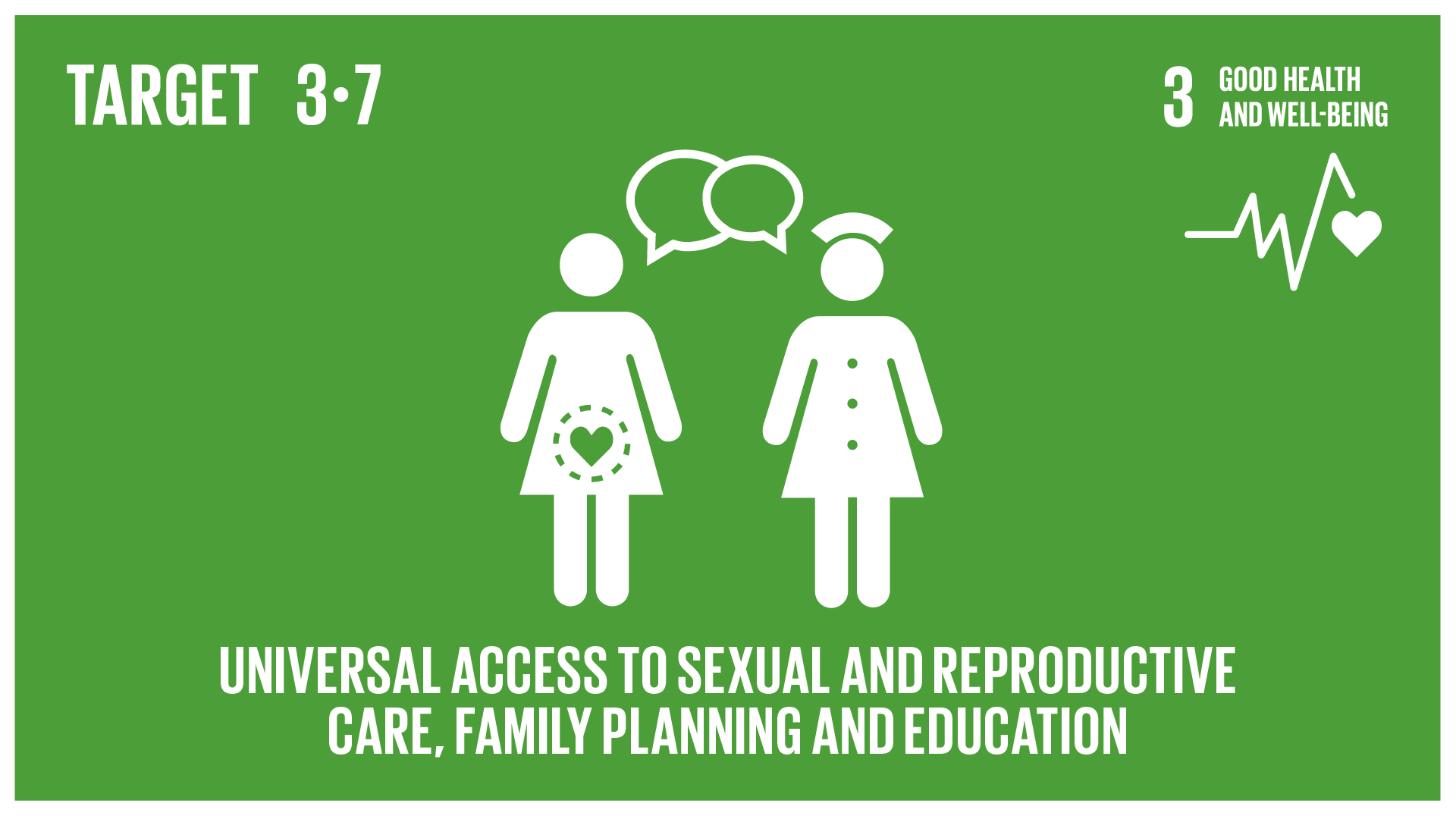SDG #3 is to “To ensure healthy lives and promote well-being for all at all ages.”
Within SDG #3 are 13 targets, of which we here focus on Target 3.7:
By 2030, ensure universal access to sexual and reproductive health-care services, including for family planning, information and education, and the integration of reproductive health into national strategies and programs
Target 3.7 has two indicators:
Indicator 3.7.1: Percentage of married women ages 15–49 years whose need for family planning is satisfied with modern methods of contraception.
Indicator 3.7.2: Adolescent birth rate (aged 10–14 years; aged 15–19 years) per 1,000 women in that age group.
This target links both to Target 3.8, which we’ll look at next, relating to universal healthcare coverage, as well as Target 5.6, under the gender equality Goal for universal sexual and reproductive health.
The UN agency overseeing sexual and reproductive health is the UNFPA, otherwise known as the UN Population Fund, as well as the Population Division of the UN Department of Economic and Social Affairs.
To help meet the rights to access affordable and quality sexual and reproductive health services and information, the World Health Organisation has published a Family Planning guidance handbook for use by health care professionals about providing contraceptive methods and services in low- and middle-income countries, including for those adolescent and women at high risk of the HIV epidemic.
One example of a method profiled in the Family Planning handbook is the mini-pill, also known as norethindrone, a birth-control pill belonging to the class of medications called progestins, which are synthetic compounds which act like the steroid hormone made by the body called progesterone to maintain pregnancy and prevents further ovulation.
The consequences of failing to acknowledge the unmet demand for contraceptives in the least developed countries put these regions at further risk of food insecurity due to the population explosion it invites, which will require even greater levels of foreign aid to feed more mouths.
The phenomenon by which fertility rates are reduced in the least developed countries, in turn slowing down the rapid rise of populations, is known as the ‘demographic transition’. Meeting family planning and contraceptive needs is a key pillar of this transition in countries which already often lack healthcare coverage, and are characterised by high maternal and child mortality rates, sometimes also accompanied by high HIV rates.
This brings us to the second indicator for this target, regarding adolescent birth rates. The global agenda for this intersection of population and development is epitomised in the Programme of Action, adopted at the International Conference on Population and Development in Cairo in 1994.
One of challenges of measuring the ages of mothers giving birth in the regions experiencing the highest rates of adolescent fertility rates are they’re sometimes out of reach of civil registration of live births.
As of 2023, 77% of the share of women throughout the world’s family planning needs were met, still short of the universal access objective of target #3.7.
The adolescent birth rate, as of 2023, is 1.5 births per 1,000 to 10-14-year-olds worldwide.



